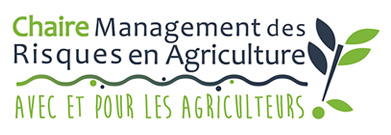Deux interventions aux Journées de Recherche en Sciences Sociales https://www.sfer.asso.fr/event/view/10 qui feront l'objet d'une publication dans des revues à comité de lecture
- Sneessens I, Ingrand S., Randrianasolo H. et Sauvée L. (2017), A quantitative approach to assess farming systems vulnerability: an application to mixed crop-livestocksystems , JRSS, 14-15 décembre, ISARA, Lyon
The vulnerability of a given system corresponds to its susceptibility to be harmed, reflecting its inability to cope with adverse effects. This inability is the consequence of three key parameters that are interconnected, the sensitivity, the exposure and the adaptive capacity of the system in front of adverse effect. At the farming systems scale, some authors tried to understand links between sensitivity, exposure, while others focused on a conceptual analysis of adaptive capacity without proposing a quantification of the level of vulnerability. Other authors propose a measurement of vulnerability based on the evaluation of farming systems characteristics, as if the factors explaining vulnerability where already known. In this paper, we first propose quantitative indicators for the three key parameters of vulnerability. Then, weapply our framework to mixed crop-live stock systems and we show that various levels of vulnerability should be explained by both some characteristics of the systems and strategies of farmers. Low vulnerable systems are more diversified, with one additional production unit and significantly higher sales of transformed products on average (+1.5 points of percentage in comparison with moderate vulnerable systems). A lower dependency to markets through better feed management (lower stocking rate) and a higher efficiency in energy and water consumption are also key determinants of low vulnerability. This management permits having bigger farms (+43 to 20 hectares) and higher flock sizes (+13 live stock units on average). The ability to cope with adverse effectis not significantly different between stable, non-stable, flexible and rigid farming systems. Our findings are a first step toward a better understanding of farming systems vulnerability: their validation on another sample would help contributing to the conception of innovative farming systems in research and to better advices for vulnerable farmers in operational projects.
- Lupton S., Randrianasolo H. et Rakotonandraina N. (2017), Les pratiques de diversification en agriculture en Ile-de-France, Hauts-de-France et Centre-Val de Loire. Une lecture institutionnaliste, JRSS, 14-15 décembre, ISARA, Lyon.
En nous reposant sur une enquête quantitative basée sur un questionnaire rempli par 338 exploitants de trois régions françaises (Hauts-de-France, Ile-de-France et Centre-Val de Loire), cette recherche rend compte des tendances actuelles de diversification au sein de l’exploitation et hors exploitation. Dans une première partie consacrée à la revue de la littérature, le concept de diversification et ses contours sont précisés. Les facteurs contribuant au développement de la diversification seront ensuite abordés (rôle de la PAC depuis 1992 ainsi que d’autres facteurs endogènes et exogènes). La deuxième et dernière partie de ce papier est consacrée à l’analyse des réponses écrites des exploitants agricoles en nous basant sur l’enquête menée de février à fin mai 2017 à partir d’un questionnaire quantitatif incluant une question ouverte sur les pratiques de diversification. Les résultats de cette enquête nous permettent de mieux comprendre de quelle façon la diversification est pratiquée par les agriculteurs/agricultrices. Nous proposons une lecture des pratiques de diversification en termes de trajectoires technologiques (Dosi, 1988a).


